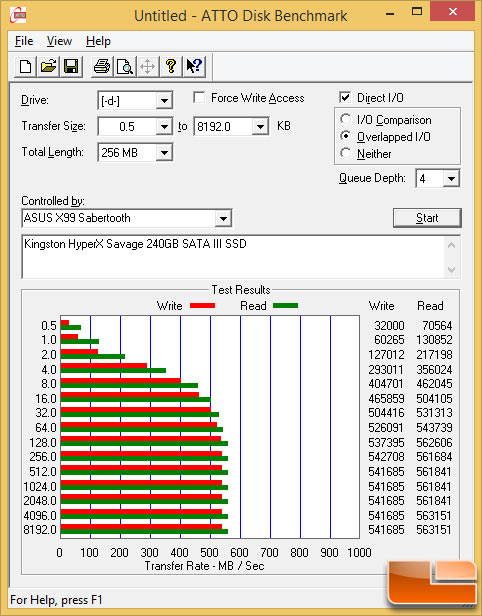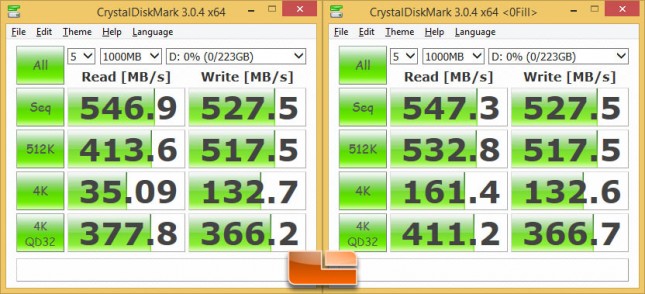HyperX Savage 240GB SSD Review
ATTO & CrystalDiskMark
ATTO v2.47
ATTO is one of the oldest drive benchmarks still being used today and is still very relevant in the SSD world. ATTO measures transfers across a specific volume length. It measures raw transfer rates for both reads and writes and places the data into graphs that can be very easily interpreted. The test was run with the default runs of 0.5KB through 8192KB transfer sizes with the total length being 256MB.
ATTO – Overlapped I/O:
Benchmark Results: ATTO showed HyperX Savage 240GB drive maxing out at 563 MB/s read and 543MB/s write in the standard overlapped I/O benchmark. Kingston rates the HyperX Savage 240GB SSD as having up to 560 MB/s read and 530 MB/s write in this exact benchmark, so it looks like those ratings are slightly conservative.
CrystalDiskMark 3.0.4 x64
CrystalDiskMark is a small benchmark utility for drives and enables rapid measurement of sequential and random read/write speeds. Note that CDM only supports Native Command Queuing (NCQ) with a queue depth of 32 (as noted) for the last listed benchmark score. This can skew some results in favor of controllers that also do not support NCQ.
Benchmark Results: The HyperX Savage 240GB drive topped out at 547MB/s read and 528MB/s write on the sequential test when we ran the drive on the CrystalDiskMark storage test with the default settings. The 4K scores were right at 35MB/s read and 133MB/s for the write speed. The incompressible data test is representative for the performance you’ll see when moving around movies, music and photographs. We also ran the 0Fill test and found that the sequential and random read/write performance of the drive essentially remained the same, but the 4K read performance shot up from 35 MB/s to 161 MB/s.
Kingston rates the HyperX Savage 240GB SSD as having up to 520 MB/s read and 510 MB/s write in this the incompressible data transfer test used by CrystalDiskMark, so once again our testing showed that we were able to exceed the manufacturer speed ratings.
Let’s look at some other benchmarks!


